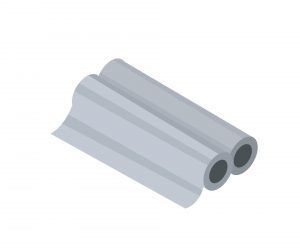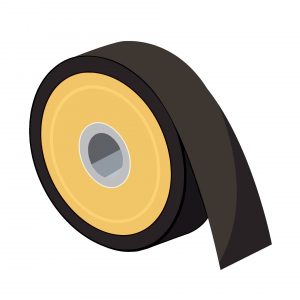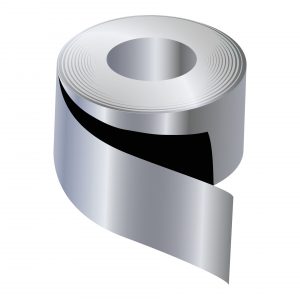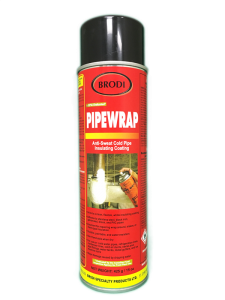Are you tired of snow sticking to your snow removal equipment and slowing you down? If so, it’s time to consider the benefits of wax coating for enhancing your equipment’s performance. Wax coating, a popular choice among professionals, not only makes your tools look sleek and professional but also improves their functionality in snowy conditions.
When applied to your snow shovels, plows, or blowers, wax coating forms a protective layer that helps prevent snow from sticking to the surface. This means you can remove snow more efficiently, saving time and effort. Additionally, the slick surface created by wax coating allows the equipment to glide smoothly over the snow, reducing resistance and making the whole process easier.
Not only does wax coating enhance your snow removal equipment’s performance, but it also helps extend its lifespan. By protecting your tools from rust and corrosion, the coating ensures they remain in top condition, capable of tackling even the harshest winter weather.
Investing in wax coating for your snow removal equipment can make a significant difference in your snow removal efficiency and the overall maintenance of your tools. So why wait? Get your equipment coated today and experience the benefits for yourself.
Advantages of Wax Coating for Snow Removal Equipment
Snow removal can be a challenging task, especially when the snow sticks to your equipment, making it difficult to clear the way effectively. This is where wax coating comes in handy. When applied to your snow shovels, plows, or blowers, wax coating forms a protective layer that helps prevent snow from sticking to the surface.
The primary advantage of wax coating is that it allows you to remove snow more efficiently, saving time and effort. The slippery nature of the wax coating ensures that the snow slides off easily, without getting clogged on the surface of your equipment. This means you can clear larger areas in a shorter amount of time, increasing your overall productivity.
Additionally, the slick surface created by wax coating allows the equipment to glide smoothly over the snow, reducing resistance and making the whole process easier. You’ll experience less strain on your arms and back, resulting in a more comfortable snow removal experience.
How Wax Coating Enhances Performance and Durability
Not only does wax coating enhance your snow removal equipment’s performance, but it also helps extend its lifespan. By protecting your tools from rust and corrosion, the coating ensures they remain in top condition, capable of tackling even the harshest winter weather.
Snow and ice can cause damage to your equipment, leading to costly repairs or replacements. Wax coating acts as a barrier, preventing moisture from seeping into the metal components and causing rust. The coating also protects against salt and other corrosive substances commonly used in winter road maintenance.
Moreover, wax coating provides a layer of insulation, reducing the risk of freezing and further damage to your snow removal equipment. This added protection ensures that your tools remain reliable and effective throughout the winter season, saving you money in the long run.
Protection Against Corrosion and Rust With Wax Coating
One of the biggest concerns when it comes to snow removal equipment is the potential for corrosion and rust. Winter weather conditions, combined with exposure to moisture and salt, can quickly deteriorate the metal components of your tools. However, with the application of wax coating, you can significantly reduce the risk of corrosion and rust.
Wax coating forms a protective barrier on the surface of your equipment, preventing moisture from coming into direct contact with the metal. This barrier inhibits the oxidation process that leads to rust formation. By keeping your snow removal equipment rust-free, you can ensure its optimal performance and longevity.
Furthermore, wax coating also protects against the corrosive effects of salt and other de-icing chemicals. These substances can cause significant damage to your tools if left untreated. The wax coating acts as a shield, preventing the salt from penetrating the metal and causing corrosion.
Increased Efficiency and Reduced Maintenance With Wax Coating
Snow removal can be a time-consuming and physically demanding task. However, with wax coating, you can significantly increase your efficiency and reduce the effort required to clear snow.
The slick surface created by wax coating allows your equipment to glide smoothly over the snow, minimizing resistance. This means you can clear snow more quickly and effortlessly, resulting in improved productivity.
Additionally, the reduced friction provided by wax coating helps prevent snow from sticking to the surface of your tools. This means you won’t have to constantly stop and clean off the snow, saving you valuable time during the snow removal process.
Moreover, the wax coating reduces the buildup of ice on your equipment, further enhancing its efficiency. The slippery surface prevents ice from forming and accumulating, allowing you to continue working without interruption.
With wax coating, you’ll also experience reduced maintenance requirements for your snow removal equipment. The protective layer provided by the coating helps repel dirt, debris, and other contaminants, keeping your tools cleaner for longer. This means less time spent on regular cleaning and maintenance, allowing you to focus on the task at hand.
Longevity and Cost-Effectiveness of Wax Coating
Investing in wax coating for your snow removal equipment can make a significant difference in its longevity and overall cost-effectiveness. By protecting your tools from rust and corrosion, the coating ensures they remain in top condition, capable of tackling even the harshest winter weather.
Snow removal equipment is a significant investment, and it’s essential to maximize its lifespan. Wax coating acts as a barrier, preventing moisture and corrosive substances from damaging the metal components. This added protection extends the life of your tools, reducing the need for frequent repairs or replacements.
Moreover, the cost-effectiveness of wax coating lies in its ability to enhance the efficiency of your snow removal equipment. By reducing resistance and preventing snow from sticking, you can clear larger areas in less time, ultimately saving on labor costs.
Additionally, the reduced maintenance requirements for wax-coated equipment result in further cost savings. With less time spent on cleaning and upkeep, you can allocate resources to other areas of your snow removal operation.
Steps to Apply Wax Coating to Snow Removal Equipment
Applying wax coating to your snow removal equipment is a straightforward process that can yield significant benefits. Here are the basic steps to follow:
1. Clean the equipment: Before applying wax coating, ensure that your tools are clean and free from dirt, debris, and rust. Use a mild detergent and water to thoroughly clean the surfaces, and allow them to dry completely.
2. Choose the right wax coating: There are various types of wax coatings available, each designed for specific materials and applications. Consider the type of snow removal equipment you have and select a wax coating that is suitable for its surface.
3. Apply the wax coating: Follow the manufacturer’s instructions for applying the wax coating. Generally, this involves using a sponge or cloth to evenly spread the wax over the surfaces of your equipment. Allow the coating to dry completely before using the tools.
4. Maintain the wax coating: To ensure the longevity of the wax coating, it’s essential to regularly inspect and maintain your snow removal equipment. Check for any signs of wear or damage to the coating, and reapply as necessary.
Types of Wax Coatings for Different Snow Removal Equipment
There are various types of wax coatings available, each designed to suit different types of snow removal equipment. Here are some common types of wax coatings:
1. Carnauba wax: Carnauba wax is a natural wax derived from the leaves of the carnauba palm tree. It is known for its durability and high melting point, making it suitable for heavy-duty snow removal equipment.
2. Polymer-based wax: Polymer-based wax coatings provide excellent protection against rust and corrosion. They are often used for smaller snow removal tools, such as shovels and blowers.
3. Silicone wax: An exclusive fusion of silicone and wax coating creates a smooth, non-adhesive layer, effectively warding off the adherence of ice and snow to plows, shovels, and other snow removal equipment.
4. Synthetic wax: Synthetic waxes are formulated to offer long-lasting protection and enhanced performance. They are ideal for larger snow removal equipment, such as plows and snow blowers.
5. Clearcoat wax: Clearcoat wax is a transparent wax coating that provides a glossy finish while protecting your equipment from the elements. It can be used on various types of snow removal tools.
When selecting a wax coating for your snow removal equipment, consider the specific requirements of your tools and the type of snow conditions you typically encounter. Consult with a professional or the manufacturer of the wax coating for expert advice.
Maintenance Tips for Snow Removal Equipment with Wax Coating
To ensure the longevity and optimal performance of your snow removal equipment with wax coating, it’s essential to follow proper maintenance practices. Here are some tips to keep in mind:
1. Regularly inspect your equipment for any signs of wear or damage to the wax coating. If you notice any areas where the coating has worn off, reapply the wax to ensure continued protection.
2. After each use, clean your equipment thoroughly to remove any dirt, debris, or salt residue that may have accumulated. Use a mild detergent and water to clean the surfaces, and dry them thoroughly to prevent moisture buildup.
3. Avoid exposing your wax-coated equipment to extreme temperatures or harsh weather conditions when not in use. Store your tools in a dry and protected environment to prevent damage to the wax coating.
4. If you notice any signs of rust or corrosion on your equipment, take immediate action to address the issue. Use a rust remover or a wire brush to remove any rust spots, and reapply the wax coating to protect against further damage.
By following these maintenance tips, you can ensure that your snow removal equipment remains in top condition, providing reliable performance throughout the winter season.











